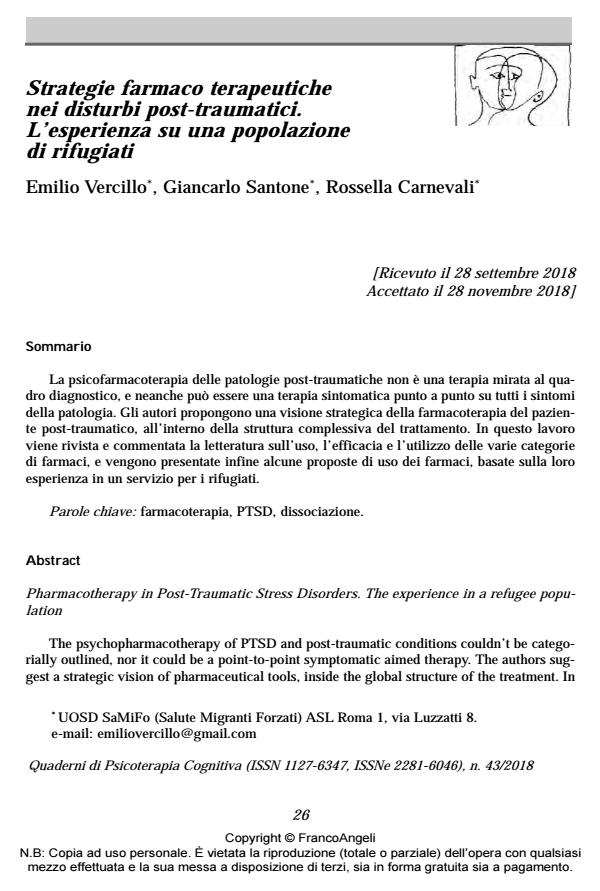Pharmacotherapy in Post-Traumatic Stress Disorders. The experience in a refugee population
Journal title QUADERNI DI PSICOTERAPIA COGNITIVA
Author/s Emilio Vercillo, Giancarlo Santone, Rossella Carnevali
Publishing Year 2019 Issue 2018/43
Language Italian Pages 14 P. 26-39 File size 103 KB
DOI 10.3280/QPC2018-043002
DOI is like a bar code for intellectual property: to have more infomation
click here
Below, you can see the article first page
If you want to buy this article in PDF format, you can do it, following the instructions to buy download credits

FrancoAngeli is member of Publishers International Linking Association, Inc (PILA), a not-for-profit association which run the CrossRef service enabling links to and from online scholarly content.
The psychopharmacotherapy of PTSD and post-traumatic conditions couldn’t be categorially outlined, nor it could be a point-to-point symptomatic aimed therapy. The authors suggest a strategic vision of pharmaceutical tools, inside the global structure of the treatment. In this paper the literature on pharmacotherapy of PTSD, is reviewed and commented, according the different categories of drugs. Lastly, they propose some practical lines of pharmacotherapic intervention, based on the clinical experience on a refugee population.
Keywords: Pharmachotherapy, PTSD, dissociation.
Emilio Vercillo, Giancarlo Santone, Rossella Carnevali, Strategie farmaco terapeutiche nei disturbi post-traumatici. L’esperienza su una popolazione di rifugiati in "QUADERNI DI PSICOTERAPIA COGNITIVA" 43/2018, pp 26-39, DOI: 10.3280/QPC2018-043002